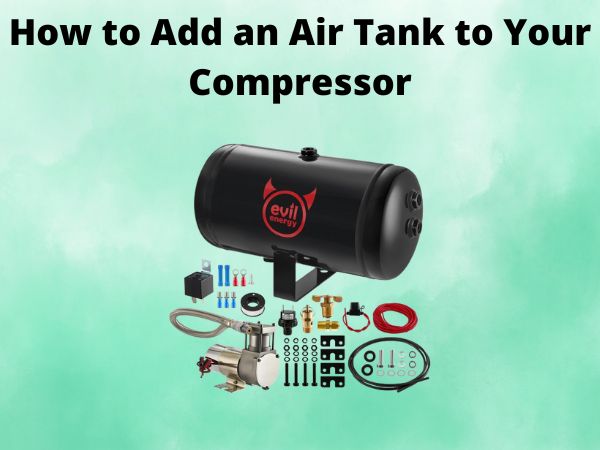How to Adjust Pressure Regulator on Air Compressor Easily
If you’re the proud owner of an air compressor, you know how essential it is to keep it in tip-top shape. One of the most critical components of an air compressor is the pressure regulator. This unsung hero is responsible for maintaining the perfect balance of air pressure, ensuring your tools and equipment function efficiently and safely.
Imagine your air compressor as a symphony orchestra. The pressure regulator is the conductor, keeping each instrument (or component) in sync and harmonious. Without a well-tuned regulator, your air compressor would be like a chaotic mess of sound – not very useful for powering your tools, is it?
Table of Contents
Assessing Your Air Compressor’s Pressure Regulator
Before we dive into the nitty-gritty of adjusting the pressure regulator, let’s take a moment to understand its purpose and how it works. The pressure regulator is essentially a valve that controls the amount of air pressure flowing from the compressor to your tools or equipment. It’s designed to maintain a consistent, pre-set pressure level, regardless of the changes in the overall system pressure.
Think of it like the thermostat in your home – it keeps the temperature at a comfortable, steady level, even as the weather outside fluctuates. In the same way, the pressure regulator ensures that your air tools receive the right amount of air pressure, no matter what’s happening in the rest of the compressor.
Signs That Your Air Compressor’s Pressure Regulator Needs Adjustment
Now, how do you know when it’s time to adjust the pressure regulator on your air compressor? Here are a few telltale signs:
- Your air tools aren’t performing as expected – they may be running too slow or not providing enough power.
- The pressure gauge on your air compressor is consistently reading higher or lower than the desired setting.
- You’re noticing a significant drop in air pressure when using multiple air tools simultaneously.
- The compressor is cycling on and off more frequently, indicating an imbalance in the pressure system.
If you’re experiencing any of these issues, it’s a clear sign that your pressure regulator needs some attention. Don’t worry, though – adjusting it is a relatively straightforward process.
Step-by-Step Guide to Adjusting the Pressure Regulator
Ready to get your air compressor back in perfect working order? Follow these simple steps to adjust the pressure regulator:
Step 1: Identify the Pressure Regulator
Locate the pressure regulator on your air compressor. It’s usually a small, cylindrical device with a knob or dial on the top. This is the component you’ll be adjusting.
Step 2: Depressurize the System
Before you start tinkering with the pressure regulator, it’s crucial to depressurize the entire air compressor system. This will ensure your safety and make the adjustment process much easier. Simply turn off the compressor and release any remaining air pressure through the drain valve or by running an air tool until the system is completely depressurized.
Step 3: Adjust the Pressure Regulator Knob
Now it’s time to make the actual adjustment. Locate the knob or dial on the pressure regulator and turn it clockwise to increase the pressure, or counterclockwise to decrease it. Take it slow and make small adjustments, checking the pressure gauge after each turn to ensure you’re reaching the desired setting.
Step 4: Test the Adjusted Pressure
Once you’ve made the adjustment, turn the air compressor back on and let it build up to the maximum pressure. Then, use an air tool or the pressure gauge to verify that the pressure is now at the correct, desired level. If not, repeat the adjustment process until you achieve the perfect pressure setting.
Step 5: Seal the Deal
After you’ve dialed in the perfect pressure, it’s a good idea to secure the pressure regulator knob or dial in place. This will prevent it from getting accidentally bumped or turned, which could throw off your carefully calibrated settings. You can use a small amount of threadlocker or even a dab of glue to keep the knob firmly in place.
Conclusion
Adjusting the pressure regulator on your air compressor may seem like a daunting task, but it’s actually a fairly straightforward process. By understanding the importance of pressure regulation and following the steps outlined in this guide, you can easily keep your air compressor running at optimal performance. Remember, a well-tuned pressure regulator is the key to ensuring your air tools and equipment function safely and efficiently, so don’t hesitate to give it some attention when needed.
FAQs
How often should I adjust the pressure regulator on my air compressor?
There’s no set schedule, but it’s a good idea to check the pressure regulator periodically, especially if you notice any changes in your air tool performance or air compressor operation. As a general rule, aim to inspect and adjust the regulator every 6-12 months, or anytime you suspect it may need attention.
What happens if I don’t adjust the pressure regulator?
If the pressure regulator is not properly adjusted, it can lead to a variety of issues. Your air tools may not perform as expected, potentially causing damage or safety concerns. The compressor itself may also experience increased wear and tear, as it struggles to maintain the correct pressure levels. Regular adjustment helps keep your entire air compressor system running smoothly and efficiently.
Can I adjust the pressure regulator while the compressor is running?
No, it’s not recommended to adjust the pressure regulator while the air compressor is running. Always make sure to depressurize the system before attempting any adjustments. This ensures your safety and makes the process much easier and more accurate.
What’s the ideal pressure setting for my air compressor?
The ideal pressure setting for your air compressor will depend on the specific tools and equipment you plan to use. Consult your air compressor’s manual or the manufacturer’s recommendations to determine the optimal pressure range. In general, most air tools and equipment work best in the 90-125 PSI range.
How can I tell if the pressure regulator is faulty and needs to be replaced?
If you’ve tried adjusting the pressure regulator but are still experiencing issues with air pressure, it’s possible the regulator itself is faulty and needs to be replaced. Signs of a bad pressure regulator include: inability to maintain a consistent pressure, excessive air leaks, or complete failure to regulate the pressure. If the regulator is not functioning properly, it’s best to replace it to ensure the proper and safe operation of your air compressor.



